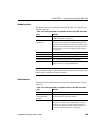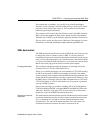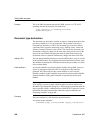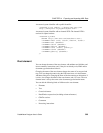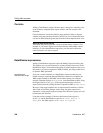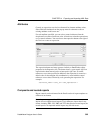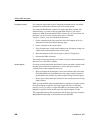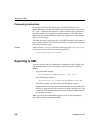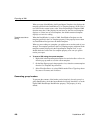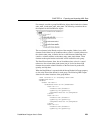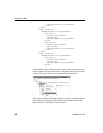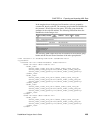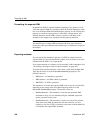
CHAPTER 14 Exporting and Importing XML Data
DataWindow Designer User’s Guide 397
CDATA sections
You can export the name of a column in a CDATA section using the syntax
<![CDATA[columnname]]>. You can export the value of a column using the
syntax
<![CDATA[~t columnname]]>. The ~t is used to introduce a
DataWindow expression, in the same way that it is used in the
Modify method.
You can also use an expression such as
~t columnname*columnname to export
a computed value to the XML.
You can import a value into a column using the syntax
<![CDATA[
columnname]]>
. Note that this syntax in a template has different results for
import and export: it imports the column value but exports the column name.
You cannot import an XML file that has a ~t expression in a CDATA section.
Everything else inside a CDATA section is ignored by the parser. If text
contains characters such as less than or greater than signs (< or >) or
ampersands (&) that are significant to the parser, it should be defined as a
CDATA section. A CDATA section starts with
<![CDATA[ and ends with ]]>.
CDATA sections cannot be nested, and there can be no white space characters
inside the
]]> delimiter—for example, you cannot put a space between the two
square brackets.
Example <![CDATA[
do not parse me
]]>
This syntax in an export template exports the value of the column emp_salary:
<![CDATA[~t emp_salary]]>
This syntax in an import template imports the value of the column emp_salary:
<![CDATA[emp_salary]]>
Comments
Comments can appear anywhere in a document outside other markup. They
can also appear within the document type declaration in specific locations
defined by the XML specification.
Comments begin with
<!-- and end with -->. You cannot use the string --
(a double hyphen) in a comment, and parameter entity references are not
recognized in comments.
Example <!-- this is a comment -->



